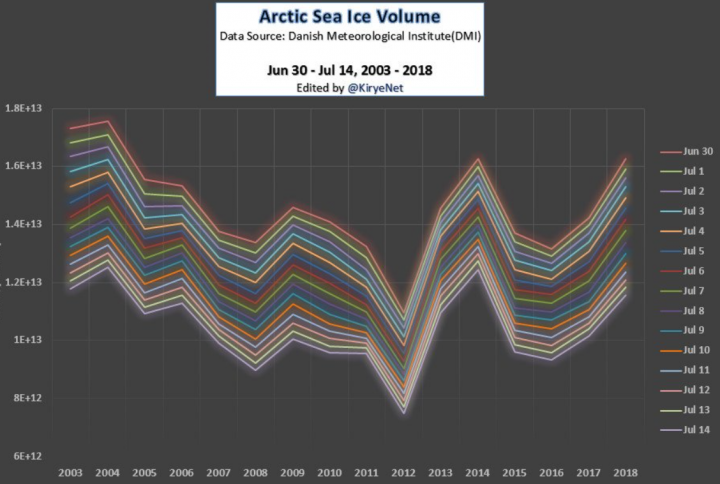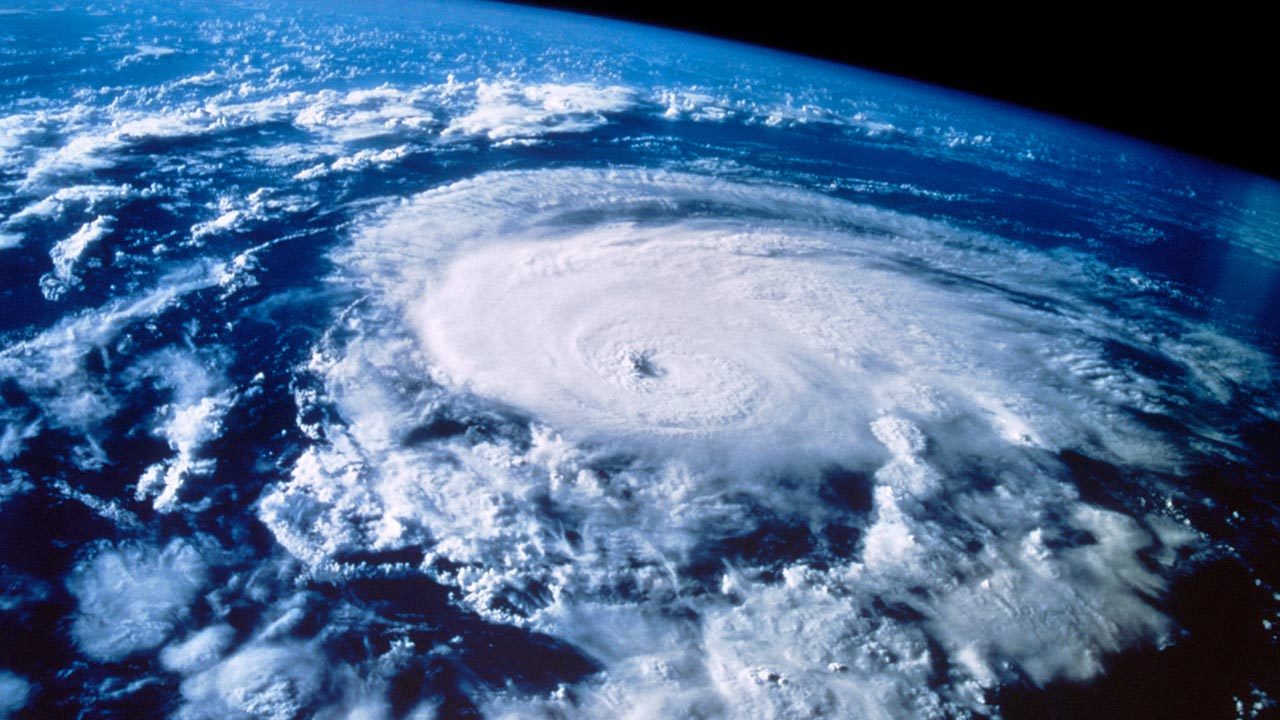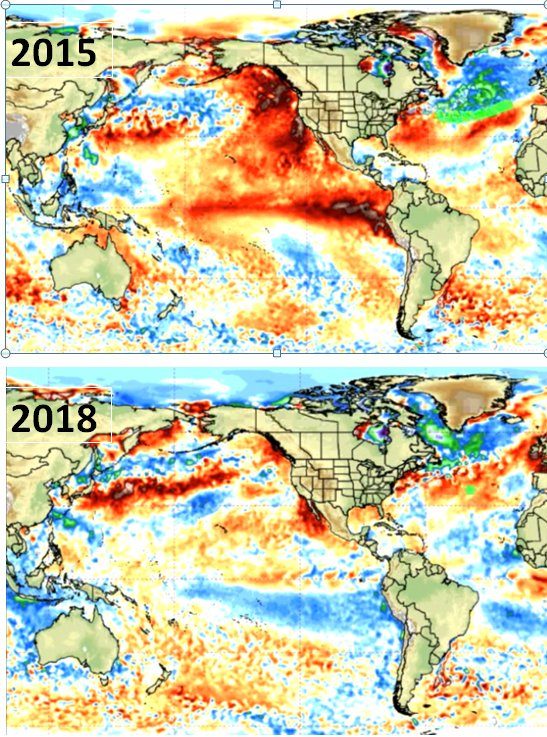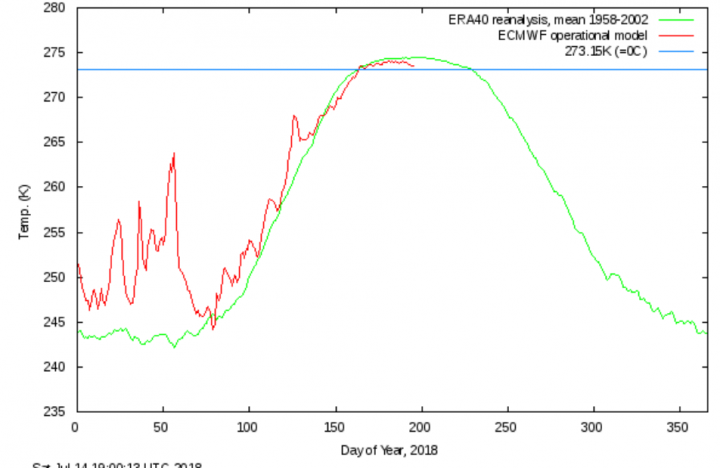Hurricane threat to East Coast due to natural factors
First at his most recent Saturday Summary, the 40-year meteorologist first warns that in-close developing hurricanes of the sort seen in the 1930s are a risk to the US East Coast this year, due the current Atlantic temperature pattern. The reason has nothing to do with CO2 in the atmosphere, but because of natural sea surface temperature cycles.
Sea surface temperatures see "pretty dramatic turnaround"
Next Joe Bastardi illustrates the stark sea surface cooling the globe has seen over the recent years. The following two charts show the "pretty dramatic" cooling that has occurred over the past three years, 2015 vs 2018:
The two images above show the surface temperatures of the globe for the years 2015 - 2018. Note the profound cooling that has taken place from 2015 to 2018.
Bastardi calls it "a pretty big flip" and "a pretty dramatic turnaround".
Arctic turns frigid
As sea surface temperatures around Greenland and in the Arctic are currently below normal, they are having an impact on Arctic surface temperatures this summer.
Joe Bastardi notes that according to the Danish DMI, Arctic temperature has been below normal over the entire summer:
Moreover, Arctic mid-summer temperatures, north of 80°N latitude, have dipped to near freezing over the past days. This is likely in large part linked to the cold North Atlantic sea surface temperatures we've been witnessing. All this suggests ocean cycles, and not CO2, are the real Arctic drivers.
Snow and ice climbing past decade
The cold polar temperatures are naturally having an impact on Arctic snow and ice.
Japanese blogger Kirye tweeted here that Arctic sea ice volume is currently at the 4th highest level since 2003, thus defying the dire alarmist predictions of Arctic sea ice disappearing by now.

Also at the 11:50 mark of his Saturday Summary video, Joe shows that Arctic sea ice extent is well above the levels seen over the previous years.
More at No Tricks Zone
You can see more about the Arctic at the WUWT sea-ice page
UPDATE: In response to Mr. Bastardi's comments in the thread for this post, the title was changed to be more reflective of what his briefing points were. - Anthony






Reader Comments
to our Newsletter